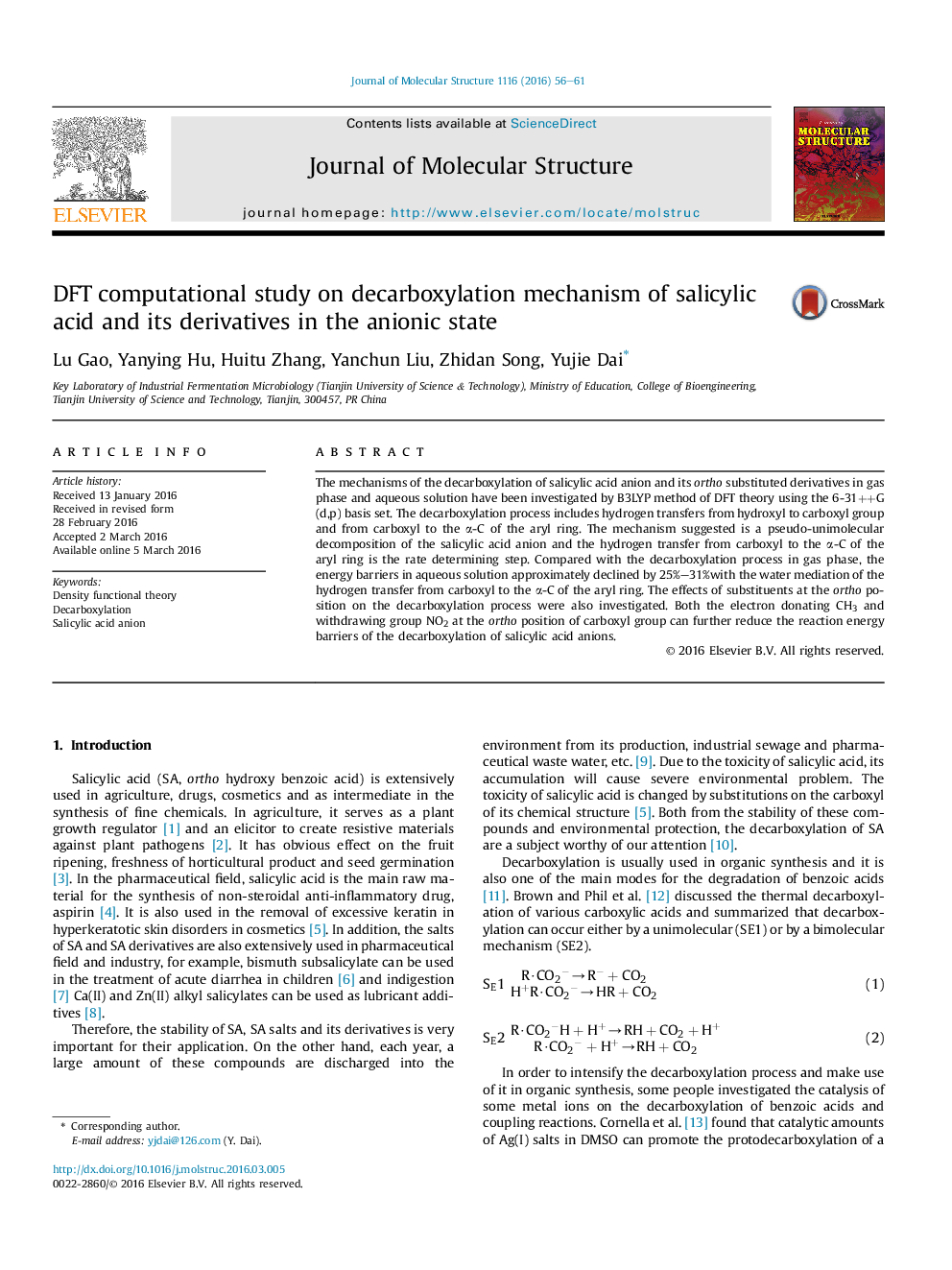| Article ID | Journal | Published Year | Pages | File Type |
|---|---|---|---|---|
| 1407773 | Journal of Molecular Structure | 2016 | 6 Pages |
•The mechanisms of the decarboxylation of salicylic acid anion have been investigated.•The energy barriers in aqueous solution approximately declined by 25%–31% compared with gas phase.•Both the methyl and the nitro at the ortho position of the carboxylate group can reduce the reaction barriers.•The decarboxylation of neutral salicylic acid is exothermic, whereas that of its anion is endothermic.
The mechanisms of the decarboxylation of salicylic acid anion and its ortho substituted derivatives in gas phase and aqueous solution have been investigated by B3LYP method of DFT theory using the 6-31++G (d,p) basis set. The decarboxylation process includes hydrogen transfers from hydroxyl to carboxyl group and from carboxyl to the α-C of the aryl ring. The mechanism suggested is a pseudo-unimolecular decomposition of the salicylic acid anion and the hydrogen transfer from carboxyl to the α-C of the aryl ring is the rate determining step. Compared with the decarboxylation process in gas phase, the energy barriers in aqueous solution approximately declined by 25%–31%with the water mediation of the hydrogen transfer from carboxyl to the α-C of the aryl ring. The effects of substituents at the ortho position on the decarboxylation process were also investigated. Both the electron donating CH3 and withdrawing group NO2 at the ortho position of carboxyl group can further reduce the reaction energy barriers of the decarboxylation of salicylic acid anions.
Graphical abstractReaction pathway for salicylic acid anion in aqueous solution.Figure optionsDownload full-size imageDownload as PowerPoint slide
